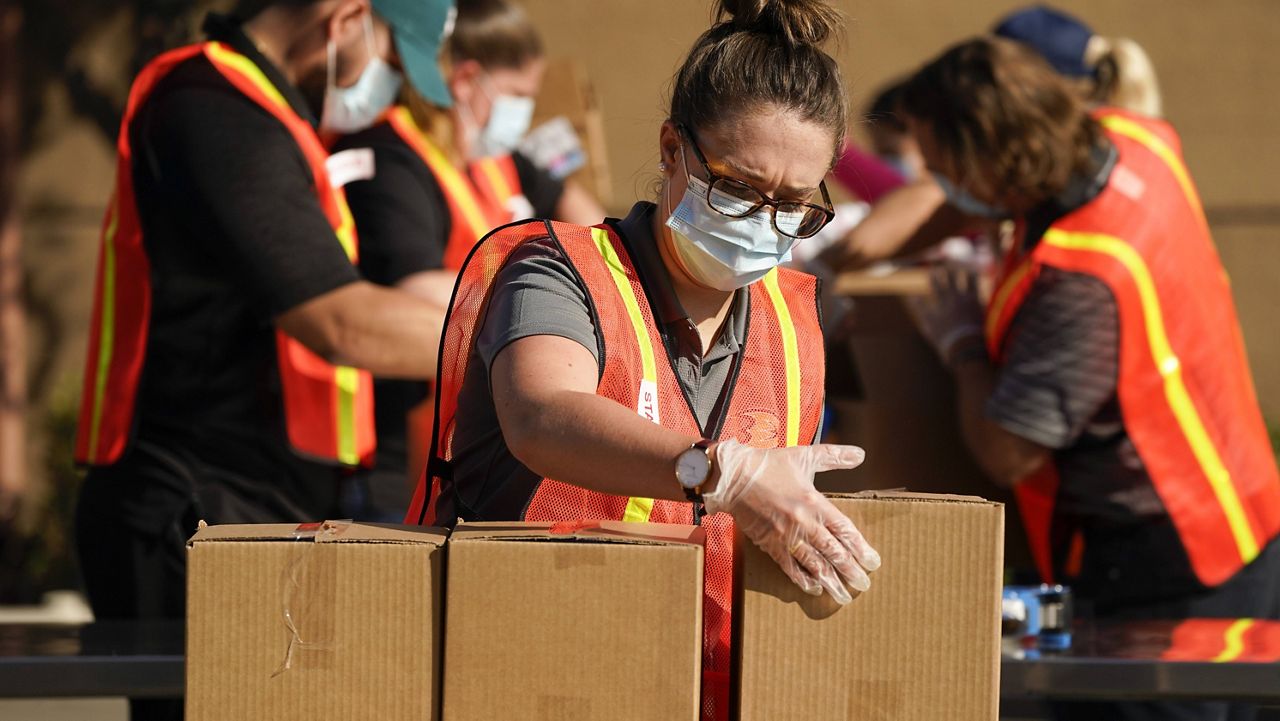SANTA ANA, Calif. (CNS) — Orange County reported 582 new diagnoses of coronavirus Thursday, raising the cumulative case count to 67,167, and nine more COVID-19 fatalities, hiking the death toll to 1,537 as hospitalizations continue to climb.
One of the fatalities was a skilled nursing facility resident and another was an assisted living facility resident.
What You Need To Know
- Since Sunday, the county has reported 13 deaths
- The change in the three-day average of hospitalized patients went from 13.5% to 17.8%
- County officials are confident local hospitals can handle the surge
- The biggest source of transmission of coronavirus was attributed to friends and families getting together
Last week, the county reported 18 deaths, compared with 24 the week before.
Since Sunday, the county has reported 13 deaths.
The number of county residents hospitalized with the virus rose from 291 Wednesday to 304 Thursday, with the number in the intensive care unit dropping from 90 to 83, according to the Orange County Health Care Agency.
The change in the three-day average of hospitalized patients went from 13.5% to 17.8%. The county has 29% of its intensive care unit beds and 65% of its ventilators available.
County officials are confident local hospitals can handle the surge.
"I think it's important to take a look at the positive COVID-19 cases in the county, but also as a percentage of those cases, how many of those are individuals who get hospitalized and also keep track of our hospital bed capacity," County Supervisor Lisa Bartlett said.
Bartlett, who is also president of the California State Association of Counties, said state officials are concerned about having enough medical staff to cover its hospital beds, but local medical center executives say they are prepared for the surge.
"Right now we still have significant bed staffing in Orange County," Bartlett said. "But we need to keep track as COVID cases rise and how many get hospitalized. We want to sure our health care system doesn't get overwhelmed."
Hospital officials must not only keep track of coronavirus hospitalizations, but for other patients as well, Bartlett said.
The state has a "mutual aid" policy regarding medical staffing of hospitals, so if there is a surge regionally outside the county, Orange County's medical professionals would be assigned where there is the greatest need.
The county's intensive care units have not seen a sharp rise in patients, which could be owed to "better therapeutics" as doctors get more efficient at treating the virus, Bartlett said.
The biggest source of transmission of coronavirus was attributed to friends and families getting together. "I think it's small to medium private gatherings, where people are in close proximity without face coverings," she said.
Bartlett and some other Orange County leaders have argued that the tighter restrictions on businesses as the county has been placed back into the most restrictive, purple tier of the state's four-tier regulatory system amount to "punishing" businesses when they aren't as much a vector for the disease.
"We can only shut down so much," she said. "That's why with the private gatherings we have to figure out how to target those."
Orange County CEO Frank Kim said it is also likely that the Nov. 3 election contributed to the rise as well.
"Any time you have a public gathering that could include social or election-related or community protests — we're not saying you can't do those things — but we're saying they're absolutely one of the areas of greater risk because you're interacting with people outside of your normal cohorts and you don't know what parts of the community these people are coming from, so now you have a mixture of people who may or may not be from the same county. It's an unstable cohort and that is added risk."
The county is rolling out a program to distribute no-cost home test kits for residents to help encourage quarantining and social distancing.
This most recent surge is still dwarfed by the rise in cases in July, when daily case rates reached 1,000 some days. Hospitalization rates soared as high as 700 on some days during the July surge. But Bartlett cautioned that deaths are often a lagging indicator and as hospitalizations increase, so could fatalities.
The number of tests conducted is 1,300,097, which includes 21,263 received Thursday.



